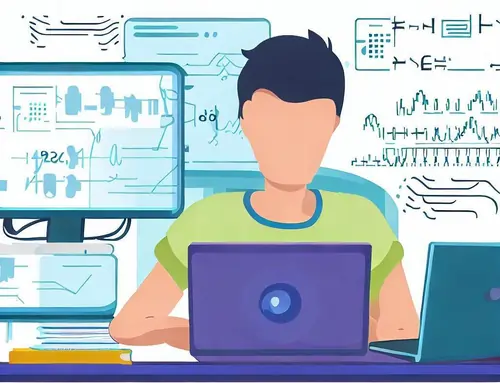Innovating Communication Technologies: Digital Modulation Techniques and MATLAB Solutions for Assignments

Communication systems are the foundation of our global network in today's networked world, allowing for the seamless transmission of information over great distances. The art of digital manipulation, a complex procedure that encodes digital data onto analog carrier signals for effective and dependable communication, is at the core of these systems. Understanding the complexities of digital manipulation techniques and their applications is becoming more and more important for students, researchers, and engineers as communication technology develops quickly. In this blog, we set out on a quest to assist with your communication system assignment and investigate the fascinating world of digital manipulation, with the guidance of a Matlab Assignment Expert, to unearth its core ideas, and to reveal MATLAB's potential as a potent tool for tackling complex communication systems problems.
It is impossible to overstate the importance of digital manipulation techniques in the context of contemporary communication systems. The study of digital manipulation becomes essential for students and engineers in the field due to the explosive growth of data-driven applications and the constant demand for faster and more dependable communication. We explore the underlying mechanisms of popular manipulation schemes like Amplitude Shift Keying (ASK), Frequency Shift Keying (FSK), and Phase Shift Keying (PSK) using MATLAB, a powerful computational tool that is widely used in many scientific and engineering domains. Students, guided by a Matlab Assignment Expert, gain invaluable insights to analyze the performance of communication systems under various channel conditions by grasping the nuances of these manipulation techniques and utilizing the power of MATLAB. This helps them hone their problem-solving abilities for successfully completing real-world assignments. So let's start this insightful investigation, led by a Matlab Assignment Expert, and discover how MATLAB solutions enable communication enthusiasts to master the challenges of digital manipulation.

Understanding Digital Modulation Techniques
The process of encoding digital data onto an analog carrier signal for effective transmission over a communication channel is known as digital modulation. It is an essential step in contemporary communication systems, allowing for the error-free transmission of data over great distances. Let's examine some of the most popular digital modulation methods in more detail, as well as their role in communication systems.
Amplitude Shift Keying (ASK)
Amplitude Shift Keying is a straightforward method of digital modulation where binary data is represented by varying the amplitude of the carrier signal. The carrier amplitude in ASK is set to one of two predefined values, which are typically indicated by the numbers 0 and 1. The carrier amplitude changes depending on whether the binary data is 0 or 1, increasing when the binary data is 1. ASK is used in applications where robustness to noise is not the main concern because it is simple to implement.
To simulate ASK modulation and demodulation, MATLAB offers a complete set of functions. Users are able to plot the constellation diagram, calculate the bit error rate (BER) for various noise levels, and visualize the transmitted and received signals. When conducting research for assignments on communication systems, students can use this simulation capability to compare the performance of ASK with other modulation techniques and assess its limitations in various channel scenarios.
Frequency Shift Keying (FSK)
To transmit digital data, frequency shift keying involves changing the carrier signal's frequency. FSK represents binary data similarly to ASK, but the two binary states are represented by various frequencies. The carrier frequency is set to f1 for binary data of 0 and to f2 for binary data of 1. FSK is used in wireless communication systems because it is comparatively noise-resistant.
Students and researchers can investigate the effects of noise and channel impairments on FSK-based communication systems using MATLAB's FSK modulation and demodulation capabilities. They can also comprehend the spectral properties of FSK signals and the trade-off between data rate and bandwidth. When developing reliable communication systems for practical applications, this knowledge is priceless.
Phase Shift Keying (PSK)
To encrypt digital data, phase shift keying modifies the carrier signal by shifting its phase. Different binary symbols are represented by adjusting the phase. Due to its spectral efficiency and robustness against noise and interference, PSK is widely used in many communication systems. Applications requiring high data rates are particularly well suited to it.
The PSK modulation and demodulation functions in MATLAB enable users to examine PSK schemes in a variety of conditions, including additive noise and fading channels. The performance of various constellations, including Binary PSK (BPSK) and Quadrature PSK (QPSK), can also be tested by users, and their BER and spectral efficiency can be compared. This practical exposure to PSK modulation aids in understanding the nuances of digital communication systems and equips students to successfully complete challenging assignments.
MATLAB Solutions for Digital Modulation Assignments
While understanding digital modulation techniques is important, it can be difficult to put that knowledge to use when working on communication systems assignments. MATLAB provides strong solutions to handle these difficulties successfully. Let's look at how MATLAB can be used in the context of assignments to simulate, examine, and design communication systems.
Simulating Digital Modulation Techniques
Students and engineers can simulate various digital modulation techniques using MATLAB's extensive built-in functions and libraries. Users can view the time-domain and frequency-domain representations of modulated signals, explore the effects of noise and distortion, and assess the performance of the entire system using MATLAB's simulation capabilities.
By using different modulation schemes like ASK, FSK, and PSK, users can simulate the transmission of digital data through a noisy channel. Students can learn a lot about the benefits and drawbacks of these techniques by comparing how well they perform in BER tests under various noise conditions. Students gain practical problem-solving abilities for their assignments as well as a solid understanding of theoretical concepts through this hands-on simulation experience.
Performance Evaluation using BER Analysis
Bit Error Rate (BER) is a critical indicator of how well digital communication systems perform. It displays the proportion of incorrectly received bits to all transmitted bits. Users can compare the transmitted and received signals in MATLAB to calculate the BER for various modulation schemes.
Students can research the effects of various elements, including signal-to-noise ratio (SNR) and modulation order, on the system's error performance using MATLAB's BER analysis tools. Understanding the trade-offs between data rate, noise resilience, and bandwidth efficiency is made easier by this analysis. Additionally, BER analysis gives users the ability to optimize communication systems by choosing the proper modulation techniques in accordance with the demands of the task or practical application.
Designing Communication Systems with MATLAB
Beyond simulation and analysis, MATLAB is a versatile program that is also an effective tool for creating communication systems. Users can easily design, visualize, and optimize communication systems with MATLAB's intuitive graphical user interface and wide-ranging libraries.
Users can, for example, create filters to reduce communication channel noise and interference, perform channel equalization to correct channel distortion, and research various error-correction coding techniques to increase data reliability. Students can design sophisticated communication systems that are specifically suited to the demands of their assignments by implementing these design elements using MATLAB.
Advanced Techniques in Digital Modulation
To meet the needs of contemporary communication systems, a number of sophisticated schemes have emerged in addition to basic modulation techniques. It is helpful to explore and use these techniques in MATLAB.
Quadrature Amplitude Modulation (QAM)
A higher-order modulation technique called quadrature amplitude modulation uses both phase and amplitude shifts to transmit data. Comparing QAM to more straightforward modulation methods, higher data rates and spectral efficiency are possible. It is extensively utilized in wireless, satellite, and digital television systems.
The QAM functions in MATLAB make it easier to comprehend and design QAM-based complex communication systems. Users can investigate various QAM constellations, such as 16-QAM and 64-QAM, and evaluate how well they perform in various channel situations. Additionally, users can better understand the spatial arrangement of QAM constellations and the trade-offs between data rate and error resilience thanks to MATLAB's visualization features.
Orthogonal Frequency Division Multiplexing (OFDM)
A multi-carrier modulation technique called orthogonal frequency division multiplexing divides the data into various subcarriers, each of which carries a different amount of information. Due to its resistance to frequency-selective fading and interference, OFDM is frequently used in contemporary wireless communication systems. Technologies like Wi-Fi and 4G LTE are built on it.
Users can better understand the complexities of this method thanks to MATLAB's OFDM simulation capabilities. Users can explore the effects of channel impairments on the performance of OFDM systems, analyze the spectral properties of OFDM signals, and comprehend the subcarrier orthogonality principles. Users can also research cutting-edge methods like adaptive modulation and cyclic prefix insertion to further boost the robustness of OFDM-based communication systems.
Conclusion
Modern communication systems are built on digital modulation techniques, which make it possible to transmit data effectively over a variety of channels. Students, researchers, and communication engineers all rely on MATLAB because of its strong simulation, analysis, and design solutions. One can gain insightful knowledge and succeed in completing assignments related to communication systems by utilizing MATLAB's capabilities.
With the help of this blog, we have looked at the basic ideas behind digital modulation methods, investigated MATLAB's capabilities for simulation and analysis, and briefly discussed advanced modulation schemes. But using MATLAB to learn and master digital communication systems is just the beginning. MATLAB will undoubtedly remain at the forefront of technology as it develops, enabling communication systems specialists to meet the increasing demands of our interconnected world.